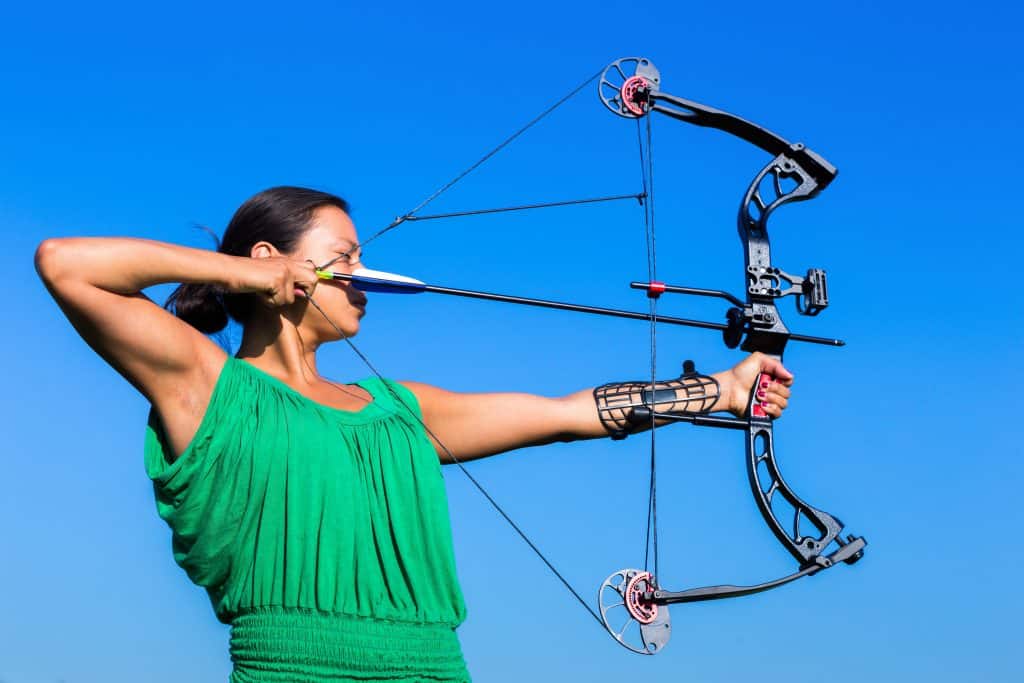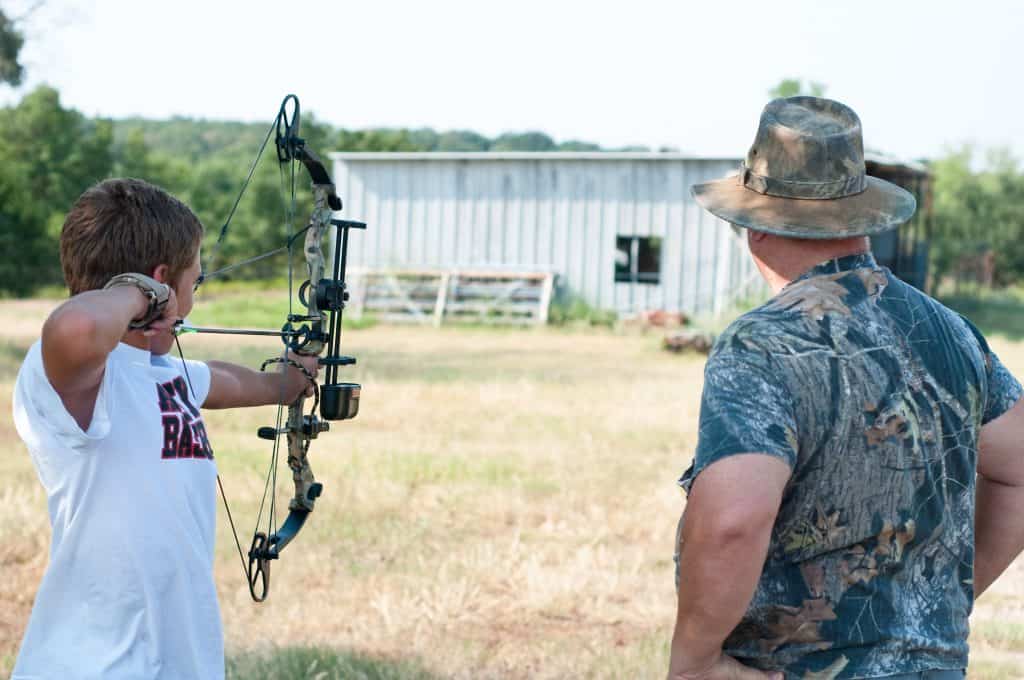Getting into bow-hunting can be confusing when not aware of the rule of archery. Understanding how to properly shoot a bow, specifically a compound bow is essential when starting out. My name is Michael Aguirre. I am a bow-hunting enthusiast at heart and I aim to thoroughly explain the 6 step process of how to properly operate a compound bow.

Here is a step-by-step-process to explain:
- Preparation
- Perfect posture
- Nocking the arrow and sighting in
- Pulling back
- Aiming
- Releasing properly
Sounds simple enough. However, there is a lot of conscious effort that goes into each step. Carefully read each step and pay close attention to the tips and tricks provided to make your new favorite pass time a relaxing experience.
Step 1: Preparation
To begin shooting with a compound bow, you will, of course, need a compound bow. You can get a beginners archery set which would include a compound bow, a quick release, and some arrows you can shoot with.
You should venture out and find a good spot you can practice in. Make sure you have plenty of space without any possibility of hitting houses, animals or people. Also, find a good target for yourself.
To prevent excessive wear on your arrows, practice shooting on a rotten stump or bring a target. Make sure you have a decent backdrop in case you overshoot your target and lose your arrow.
Things you’ll need to get start:
- Compound bow
- Target
- Arrows
- Armguard
Before you head out, take your bow in to have adjusted for your draw length. Compound bows are built for adjustment, allowing them to last throughout the years being passed on to different hands.
You can stop at nearly any sporting goods store to have nearly every adjustment made; including the adjustment of the peep sight, the height of the arrow rest, and the draw length fitted to your build. The draw length of a bow is essential for the next step on our list.
Step 2: Posture
For perfect posture, If you are right-handed, your left side should be positioned towards the target with your left foot extended. The opposite is applicable for left-handers.

Stand with your feet apart almost equal to the width of your shoulder. You should also be standing almost perpendicular to your target. Stand up straight as if you had a string tied to the very top of your head and it was holding you up. Once there, you can move into the next step.
Step 3: Nocking The Arrow And Sighting In
When sighting in your target, judge the distance between your position and your target based on yard increments. Judging distance in measurements of feet can prove to be very inaccurate. Yards, on the other hand, are easy on the mind and simple to remember.
Starting out, you will see your aim is shaky and a little unstable, so make sure you first stand at most 15 yards away from your target. To measure the distance exactly, bring along a rangefinder or a measuring tape. To roughly estimate, stand next to your target and take long stride steps away from the target.
The next step is to nock the arrow in the bow. The nock is the split plastic or wooden stubby knob at the end of the arrow opposite the arrowhead.
Place the nock on the string turn it so that the differently colored vain is facing upward, and press the nock against the loop of the bowstring at the center until it clicks in place.
This is done first to prevent any injury or accidental contact with the arrowhead on the string, severing it and breaking the bow. After that, place the arrow on the arrow rest, in the firing position. The arrow has been nocked.
Step 4: Pulling Back
Pulling back a compound bow is an art that requires two simultaneous actions. First, bring the bow up to eye level, then simultaneously push with your non-dominant hand while pulling back with your shooting arm. This distributes the weight of the draw equally on both arms rather than on one.
When pulling back the bow, do not pull with just your dominant hand, and avoid contorting your dominant elbow. Many make this mistake and tucker out their shooting arm too fast.
Instead, swiftly and tightly pull back the bow using one hand to push and the other to pull till the bow comes to a let-off point or anchor point where the weight seems to disappear.
The release is one of the essential parts of your bow. Tie it to your dominant hand, left or right, using the given straps. The clamp of the release should then be attached to the bowstring. The release of the arrow is initiated by pulling on the trigger.
If you are using a release to pull back your bow, make sure your finger is off the trigger when pulling back the string and pull your elbow straight back in the same fashion.
Now you are all set up and ready to aim.
Step 5: Aiming
With the bow pulled back, rest your dominant hand underneath your jaw bone, lining up your line of sight with the peep sight located on the string.
The following steps can be tricky:
- Look through the
peep sight - Line your vision up with the sight above your arrow rest
- With both eyes open, place the dot sight on your target
A word for the wise; remember to always keep both eyes open with archery. To correctly determine your target’s distance, one keeps both eyes open to not lose his or her sense of depth perception. Now that you are all sighted in, you are ready for the best part.

Step 6: Releasing Properly
Before releasing, take a deep breath and hold it to steady your shot and relax your forefingers gripping the bow. When you are sighted in and ready to release, remember to do so slowly; squeezing the trigger till it releases itself.
You should not take a shot without feeling confident that you are ready. Often times, archers will accidentally flinch and grip the bow, throwing off the arrow’s trajectory and missing their target.
Release the string confidently while keeping your eyes trained on your target. By following these tips, you will find that hitting your target from any distance will be a breeze and quite relaxing.
The key to becoming a better archer is simple and cliched: practice. Spend as much time as you can practicing and repeating this routine with your compound bow and soon enough, it will become akin to a second nature
